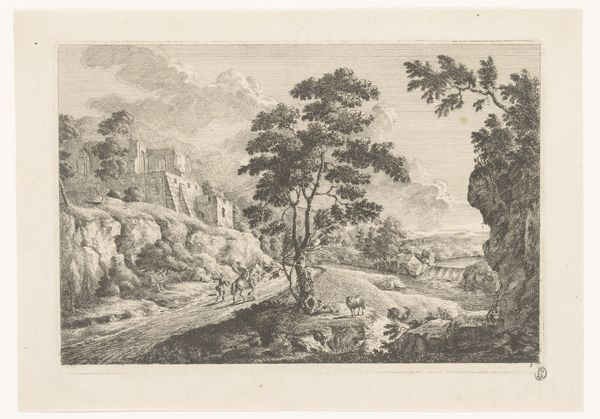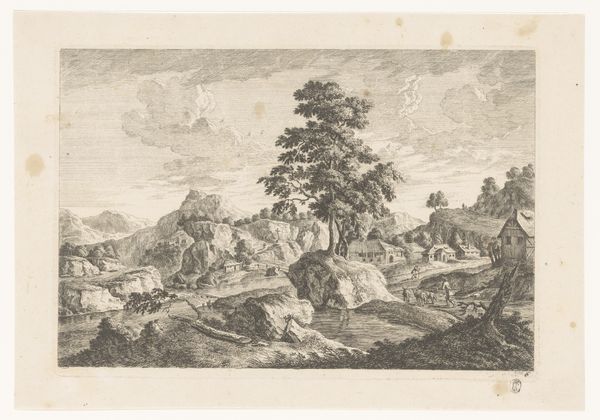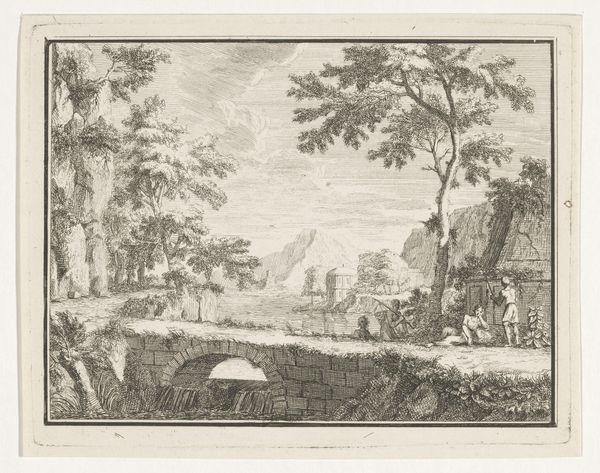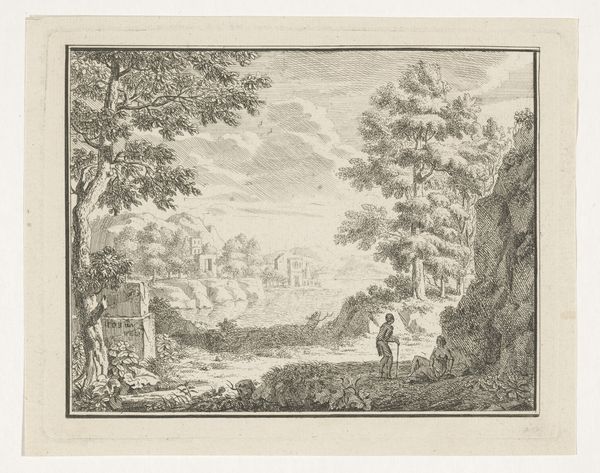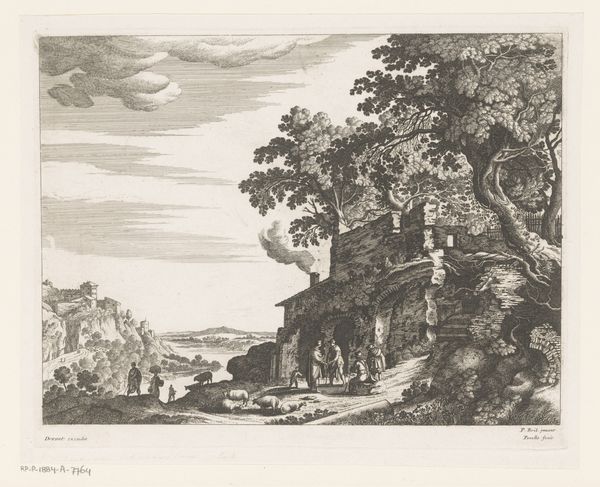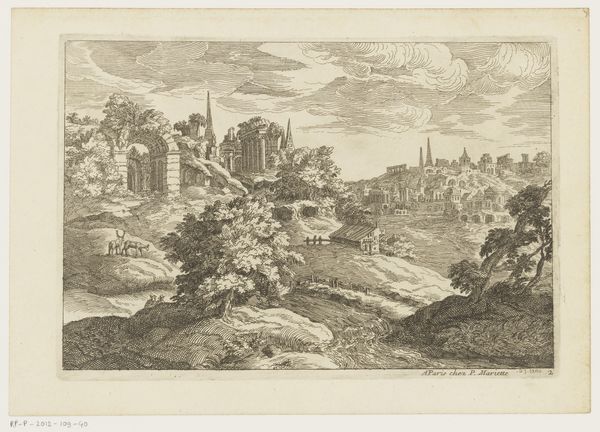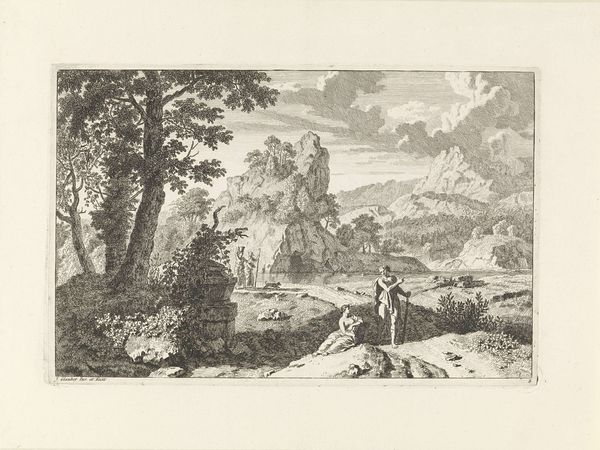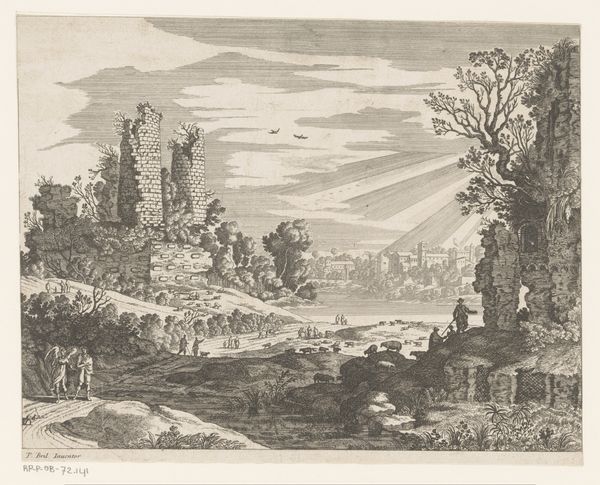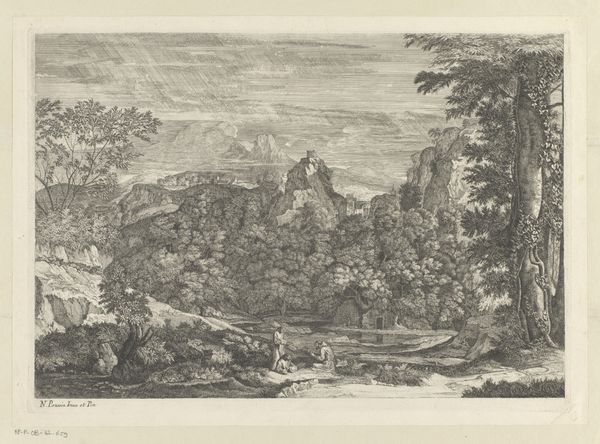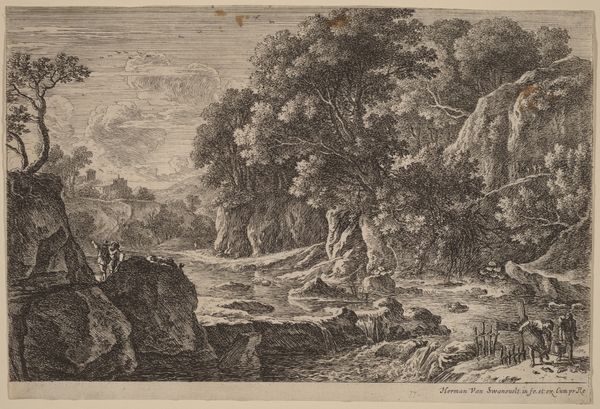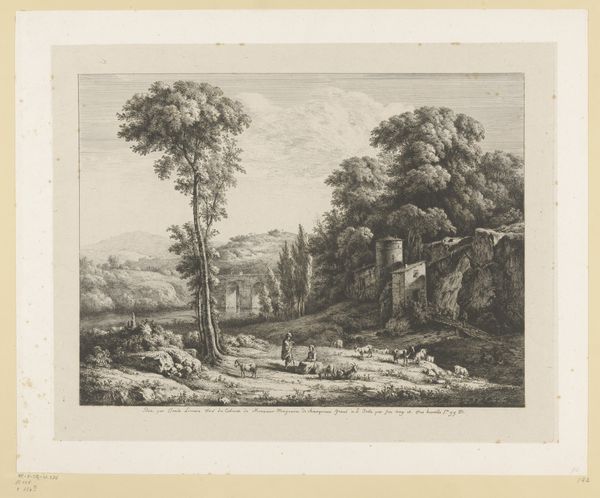
engraving
#
neoclacissism
#
old engraving style
#
landscape
#
history-painting
#
engraving
Dimensions: height 275 mm, width 362 mm
Copyright: Rijks Museum: Open Domain
Curator: Here we have Johann Christian Reinhart's "Landscape with an Aqueduct", an engraving dating from 1802. It's a fascinating piece blending idealized nature with classical architecture, characteristic of the Neoclassical movement. Editor: It feels... contemplative. The precise lines create a stillness, almost like holding your breath in the countryside. Are those cows drinking from the stream? They add a peaceful, pastoral vibe that really resonates. Curator: Indeed! The cows enhance that very effect. Reinhart, a German artist working in Rome, was deeply influenced by the Roman Campagna and classical ideals. His work engages with history-painting conventions through the seemingly objective rendering of landscape. Notice how the aqueduct, a symbol of Roman engineering, is seamlessly integrated into the natural surroundings, suggesting a harmonious relationship between humanity and nature. Editor: It’s romantic in a calculated way. The decay suggests the passing of time, while the idyllic setting seems to promise something eternal, too. So, what statement was Reinhart trying to make here? Was it nostalgic or... I don't know, hopeful? Curator: It’s a layered sentiment. Many at the time looked to the antique world to inform their own political realities. Landscapes weren't just pretty scenes. They provided fertile ground to grapple with themes of political authority. I feel that this aqueduct stands in for this concept. The engraving style itself speaks volumes. It harkens back to older forms of printmaking, giving the entire image a weighty connection to tradition. Editor: Yes, the engraving emphasizes the work's timeless feel. It feels deliberate, even didactic—though I can't decide what lesson it imparts! But I like that unresolved tension. It's not as simple as mere nostalgia, or plain-old propaganda. Curator: Absolutely. This engraving offers insight into the 19th-century reception of classical antiquity, suggesting that we continue reflecting on the ruins of the past in our present day. Editor: You’re right. Thinking about what to make of ruins still makes sense now. The way the artist thought about time gives me hope for whatever might be ahead.
Comments
No comments
Be the first to comment and join the conversation on the ultimate creative platform.
